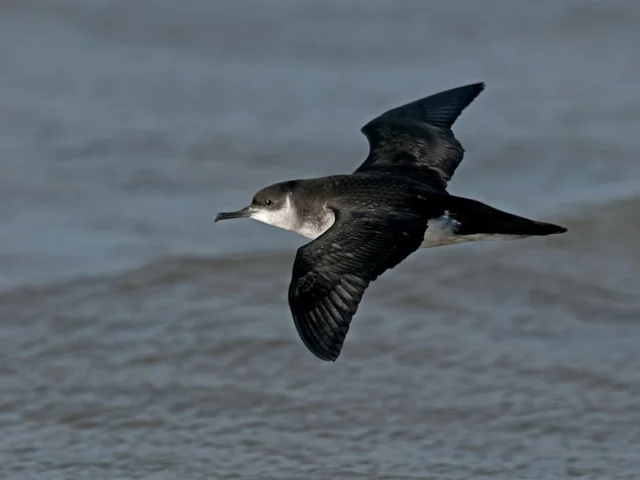Welsh seabirds get protected sites
94ab00f6-dcdb-464e-ae18-c73bc4b7496a

RSPB Cymru has thanked the Welsh Government with a special art creation for taking a step towards protecting special sites for seabirds in Wales’s coastal waters.
Today the Minister for Natural Resources Carl Sargeant announced additional protection in the seas around three key sites for seabirds; this follows a public consultation which was held earlier this year by Natural Resources Wales (NRW). The sites are Grassholm RSPB, and The Wildlife Trusts of South and West Wales islands of Skomer, Skokholm and Bardsey Island.
RSPB Cymru commissioned local artist Theo Shields to create a sand art picture at LLanddwyn Beach, Anglesey, North Wales, in the form of a Northern Gannet, Manx Shearwater and Puffin, to express its thanks to Welsh Government.
This means that a radius of up to three miles of sea around these islands is now protected by law, and these areas will need to be managed effectively for the benefit of birds and other sea wildlife that rely on them. The sites will contribute to the network of special protected sites at sea used by breeding seabirds, helping the colonies to be healthier and more resilient to other factors such as climate change, which is at the root of recent winter storms and sea temperature rises.
Gareth Cunningham, RSPB Cymru Marine Policy Officer, said: “The seas around the islands are so important for our seabirds as these are where the birds live and socialise. Birds like Northern Gannet, Manx Shearwater and Puffin will use areas like this for feeding and displaying.
“This is a great step forwards but there is still more to be done: by the end of 2015 we need to protect other essential marine areas for seabirds, especially where the birds feed further out to sea. Working with local communities and industry we hope that Welsh Government identifies the best ways of managing these sites for seabirds, now and in the future.”
RSPB Grassholm is home to 40,000 pairs of Northern Gannet – 10 per cent of the world population – while Skomer and Skokholm are estimated to be home to over 350,000 Manx Shearwaters, a massive 50 per cent of the world population. Bardsey Island holds another 16,000 pairs of Manx Shearwater and was home to Wales's oldest Razorbill, which was aged at 41 in 2008 by a ringing recovery.
The twin challenges of biodiversity loss and climate change can only be met by changing the way we live and think. RSPB Cymru will continue to work with the Welsh Government to seek improvements and a bright future for Welsh seabirds.
Today the Minister for Natural Resources Carl Sargeant announced additional protection in the seas around three key sites for seabirds; this follows a public consultation which was held earlier this year by Natural Resources Wales (NRW). The sites are Grassholm RSPB, and The Wildlife Trusts of South and West Wales islands of Skomer, Skokholm and Bardsey Island.
RSPB Cymru commissioned local artist Theo Shields to create a sand art picture at LLanddwyn Beach, Anglesey, North Wales, in the form of a Northern Gannet, Manx Shearwater and Puffin, to express its thanks to Welsh Government.
 |
| The RSPB thank you image created by artist Theo Shields at LLanddwyn Beach, Anglesey, North Wales. From left to right: Manx Shearwater, Northern Gannet and Puffin. Photo: www.rspb-images.com. |
This means that a radius of up to three miles of sea around these islands is now protected by law, and these areas will need to be managed effectively for the benefit of birds and other sea wildlife that rely on them. The sites will contribute to the network of special protected sites at sea used by breeding seabirds, helping the colonies to be healthier and more resilient to other factors such as climate change, which is at the root of recent winter storms and sea temperature rises.
Gareth Cunningham, RSPB Cymru Marine Policy Officer, said: “The seas around the islands are so important for our seabirds as these are where the birds live and socialise. Birds like Northern Gannet, Manx Shearwater and Puffin will use areas like this for feeding and displaying.
“This is a great step forwards but there is still more to be done: by the end of 2015 we need to protect other essential marine areas for seabirds, especially where the birds feed further out to sea. Working with local communities and industry we hope that Welsh Government identifies the best ways of managing these sites for seabirds, now and in the future.”
RSPB Grassholm is home to 40,000 pairs of Northern Gannet – 10 per cent of the world population – while Skomer and Skokholm are estimated to be home to over 350,000 Manx Shearwaters, a massive 50 per cent of the world population. Bardsey Island holds another 16,000 pairs of Manx Shearwater and was home to Wales's oldest Razorbill, which was aged at 41 in 2008 by a ringing recovery.
The twin challenges of biodiversity loss and climate change can only be met by changing the way we live and think. RSPB Cymru will continue to work with the Welsh Government to seek improvements and a bright future for Welsh seabirds.

